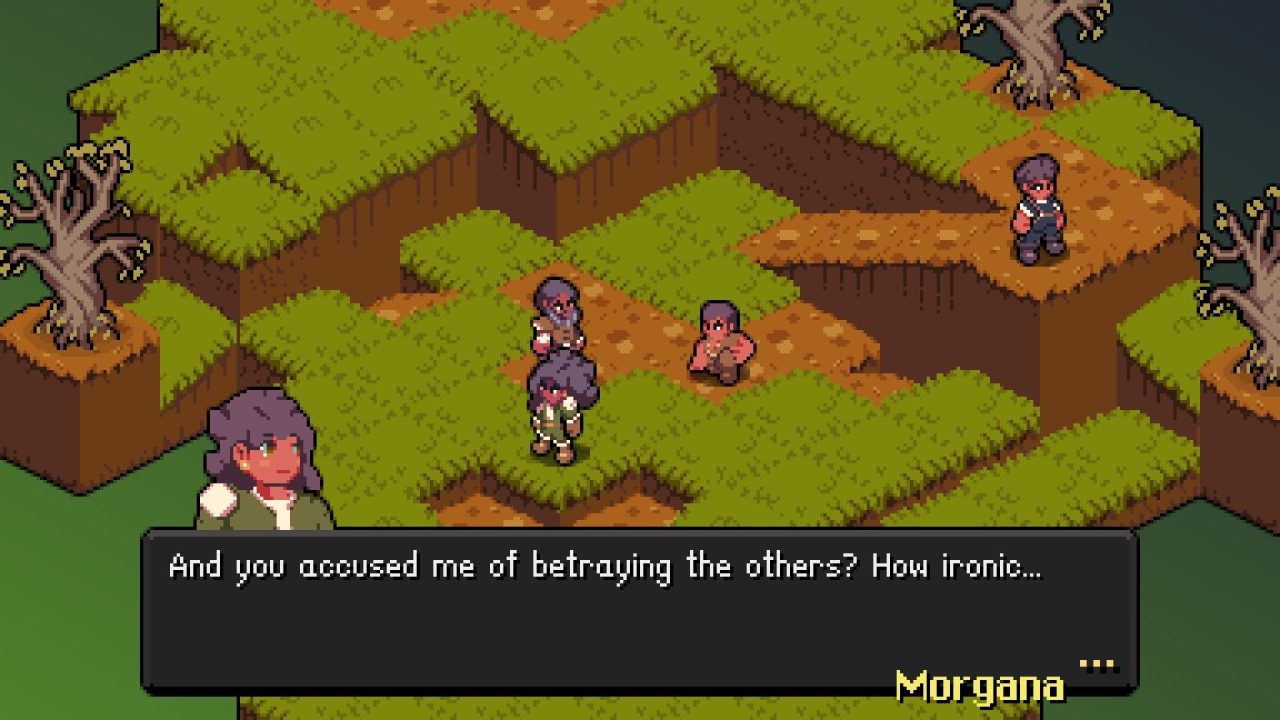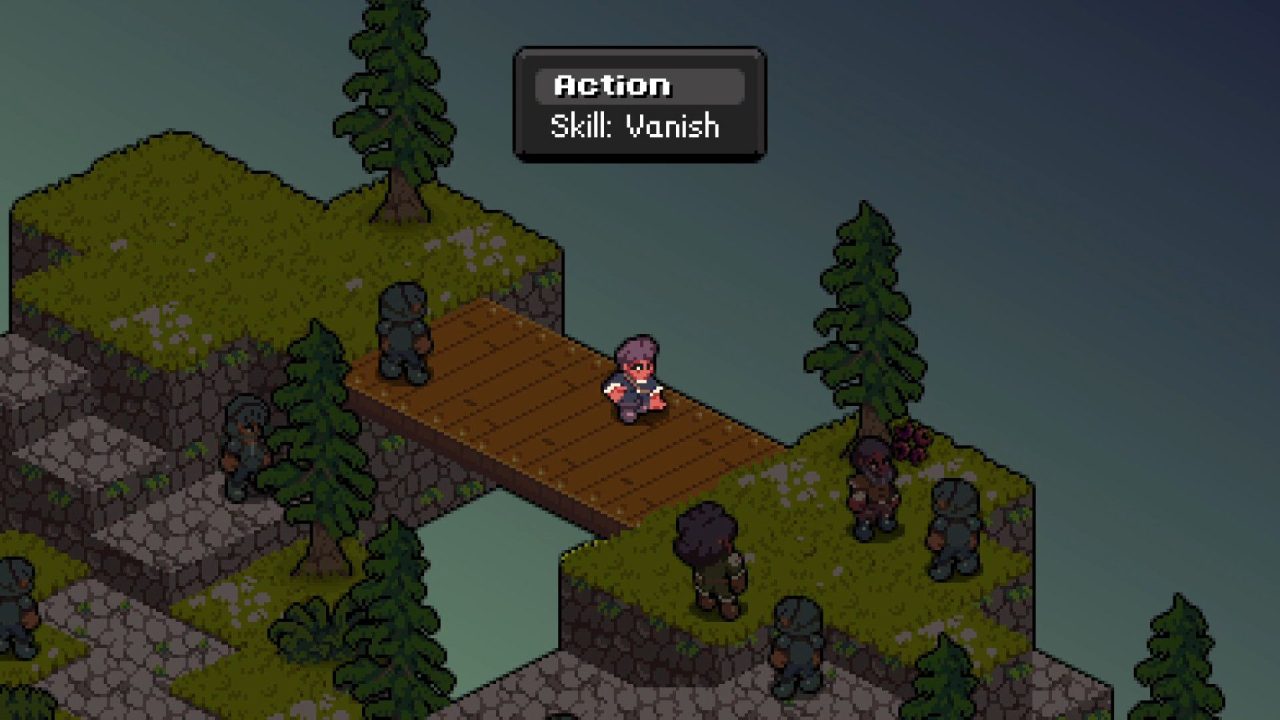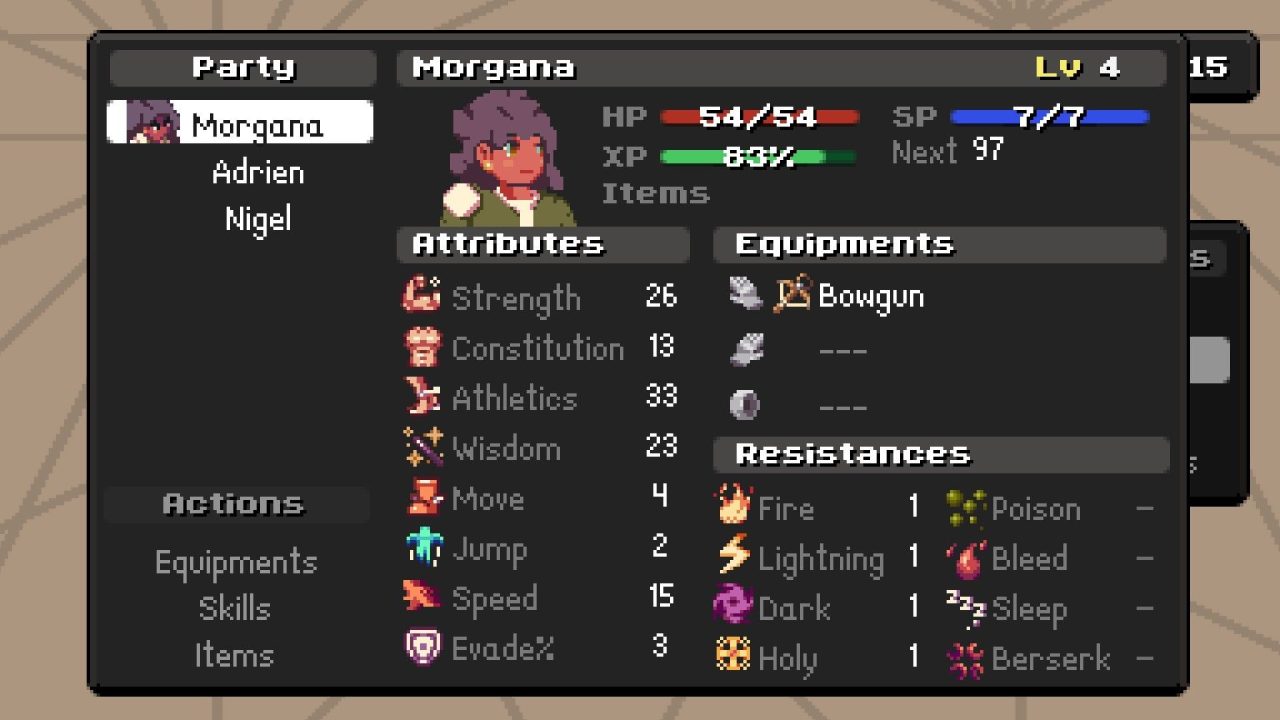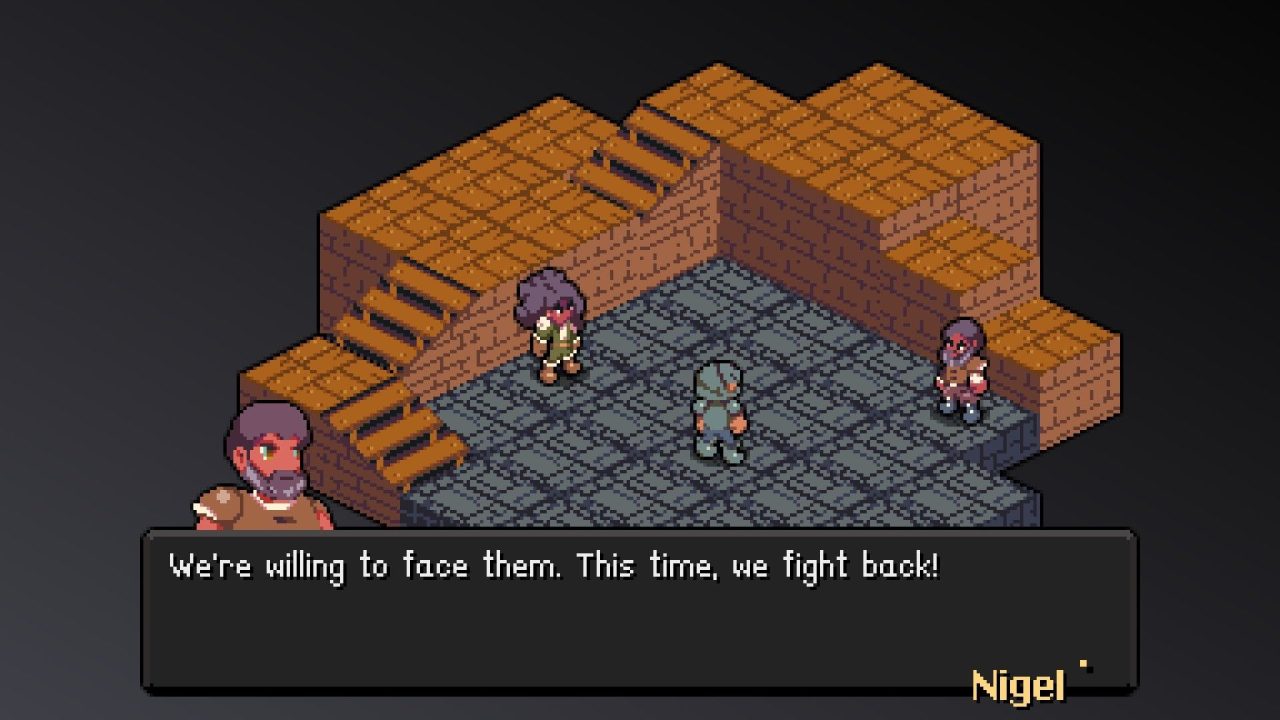Sometimes, the hardest choice to make is uprooting and leaving everything behind in the hope that something better might be waiting elsewhere for you. There may be incredible hardships and tragedies lying in wait just for the mere possibility of something better. Such is the uneasy choice that our trio of main characters makes in the short SRPG Vanaris Tactics, a compelling venture into one fractured family of refugees attempting to escape their war-torn land.
Vanaris Tactics tells a rather bleakly realistic narrative in a fantasy world where the conquering Northerners invaded the Southerners’ lands, setting up a colony called Vanaris that is supposedly going to be shared equally by all. This is far from the truth as the monotheistic Northerners want to extinguish the cultural and spiritual beliefs of the Southerners, allowing them “freedom” only if they adhere to Northern societal rules and religion. Children under the age of ten are taken from their families, forcibly converted, and assimilated to the Vanaris cause, leaving many Southerners to simply tolerate the injustices heaped upon them for the sake of their offspring. Some Southerners rebel against the oppressive rule, but they’re outmatched, and the fighting simply makes it more difficult for the Southerners to live with any kind of peace or security. Main character Morgana and her brother Nigel grow weary of the situation. Together, with Nigel’s eldest son Adrien, they decide to flee Vanaris. Those hellbent on systematically destroying the Southerners’ culture and even the rebels still fighting a losing battle make their journey perilous.

I can’t say much more about the intricacies of Vanaris Tactics’ plot because the game itself boasts a shorter playtime at roughly eight hours in length, making me especially wary of spoilers. Suffice to say, it leans heavily into the more mature political and societal commentary one often associates with strategy RPGs as a whole, albeit with a slight twist. The refugee-centered narrative makes for some emotional plot points, especially later on when certain painful truths come to light. Morgana and Nigel are particular standout characters with some poignant moments, as is the magic-wielding Pilar who joins the party later. It’s a shame that most of the other characters are only given slight moments to shine during the game’s brief run, but it makes sense that the tale’s length lends itself to sharp focus in terms of storytelling.
Gameplay-wise, Vanaris Tactics plays similarly to beloved SRPG classics such as Final Fantasy Tactics or Tactics Ogre: Let Us Cling Together. Players control a maximum party of up to five characters on a grid map, going up against either human opponents or an array of fantastical ones. You can raise attack accuracy by striking from the back or side when an opponent comes in range. Also, characters acquire valuable skills as they level up that either passively boost their stats and abilities during combat or grant them access to special combat moves/spells. Skills and spells that have area of effect ranges also have to be used more strategically during fights because friendly fire is something to seriously consider in Vanaris Tactics.
Characters max out their levels at level twenty, and each party member has a specific specialization that distinguishes them on the battlefield. Morgana is a ranged fighter who can debilitate opponents using status effect skills or boost someone’s speed with Haste. Adrien is a “ninja” type character utilizing high maneuverability and speed during combat, while Nigel is the powerhouse “tank” of the three main characters: slow to move but dealing a lot of damage while taking heavier hits.
They’re later joined by Wei, a paladin-esque character with vital healing spells, and Pilar, a mage character who can teleport across the field wielding devastating AOE spells. Rounding out the main party are the optional characters: Angela, a surprisingly friendly and sympathetic necromancer of Northerner origin who wields a gun in combat, the dog Arus, and the monstrous Qiamat, though the computer AI controls those last two when used in battle, so they can’t equip items, weapons, or armor. Every human party member has a unique weapon type (save for the weaponless Pilar), and they can equip one beneficial accessory and an item to their person.

The limited resources and even skills initially available to you out on the field inspire clever and creative strategy. Unless you use your only accessory slot to increase a character’s item carrying capacity, they’re only able to bring one item with them into the fray. Does that mean you take a valuable restorative item with you or something that might help with a status effect instead? What about something that restores SP if a character uses a lot of active skills/spells? Giving Pilar an accessory that allows her to equip multiple items was vital to my strategy, as I could use those item slots to replenish the SP she uses in combat through her spell-slinging and teleporting. For Morgana, I found an accessory that protects against status effects to be the better option because she was generally fine with carrying just one health restorative. Nigel has an item throw ability and benefits from having multiple items available as a backup healer. With nearly everyone else, I factor in what accessories might prove most useful out on the field even if that means going in with limited provisions.
Aside from the fifteen main narrative battles you encounter, you can often opt to return to a battlefield and partake in optional “random” battles. Generally speaking, you fight at least four of these scenarios before opening up the area’s “boss battle,” which is a higher-level fight. Clearing this boss fight generally gives you an award of some kind: either a more powerful accessory than you can find in a shop or one of the optional party members. There are only two variations of the battles on these challenge fields, so playing through them to unlock the boss fights gets repetitive. However, the experience and money they provide, as well as the awards and story scenes you sometimes get from the optional boss battles, makes them worth it. I found using these optional fights to level grind quite helpful when playing through the main story battles later on. The difficulty can spike a lot in the beginning stages, as your party starts out with low levels and only three characters.

Because the game centers around refugees fleeing their oppressed homeland, it is vital to note that areas of the world map will become blocked off the further you advance through the plot. After all, it wouldn’t make sense from a narrative perspective for the party to be able to travel freely back to their starting point when they’re trying to leave the region entirely. It’s therefore advisable to partake in the optional fights and boss battles as quickly as possible to avoid completely losing access. If the standard speed for battle animations and the like is running a little slow while you do this, you can also opt to make it faster in the Settings menu at any time.
There really aren’t a ton of bells and whistles to Vanaris Tactics in terms of gameplay or presentation. The gameplay is simple enough to pick up (with a controller in particular) if you’re familiar with SRPGs, but newcomers might find the lack of a button layout guide difficult at first. Tutorials are also minimal, provided within the early stages of the game. They’re masked as dialogue between characters, which breaks the story immersion given how gameplay mechanics don’t seamlessly translate to a narrative. You travel from area to area on the world map and have the option to initiate a fight or visit a shop depending on the locale, handle party management, save or load game data, peruse settings, or quit the game. That is pretty much it for actions you can take outside of battle. The menus are functional, albeit on the simple side of the spectrum, and story scenes play out with in-game graphics. It should be noted that there isn’t an autosave system, so saving manually at regular intervals is recommended.
Visually, Vanaris is a setting of often-muted greens, grays, and browns. The spritework is detailed enough, and the title’s visual design and art direction are eye-catching. The artwork is done by Derek Souza and Patu, with additional art by Dio Mahesa, Matthew Stefan Gunawan, and Hendry Roesly. It is reminiscent of the graphic and artwork presentation of Final Fantasy Tactics specifically, and it was one of part of my initial curiosity about the title: it just stands out while bringing to mind further comparisons to that classic SRPG.

The English localization for the script has weirdly phrased components at times, with occasional wording and modern slang dubiously fitting the fantasy setting. For instance, “badass” shows up a few times throughout the dialogue. Still, the English localization is serviceable and helps convey the right amount of emotion during more poignant scenes later on. I also have to give Vanaris Tactics credit for having numerous localization options readily available from the offset, ensuring more players can experience the title the world over! Music and sound effects were the work of Rafa Silva, and I was quite impressed with the game’s overall soundtrack. There wasn’t a wide variety of battle tracks due to the title’s shorter length, but they were well-orchestrated, helping add a sense of intensity to fights. One particular moment has sword-drawing effects while the screen goes black and shows just how effective sound effects can be during story scenes too.
Vanaris Tactics was designed by Brazilian developer Matheus Reis, taking inspirational cues from some of the great SRPG classics while managing to tell a compellingly unique story full of moral ambiguity and important messaging. The game isn’t terribly long, and even individual battles don’t wear out their welcome if you maintain proper levels and gear, as is the case for other SRPGs. Vanaris Tactics is a perfect SRPG for fans of the genre who want a complete, fully realized tale in a shorter amount of time. I greatly appreciate the story it conveys, and I enjoyed my time playing. I am looking forward to seeing just what other games Matheus Reis and publisher Toge Productions produce in the future. Ultimately, Vanaris Tactics is a story about the journey and just who we might end up becoming on the way to our given destination.


